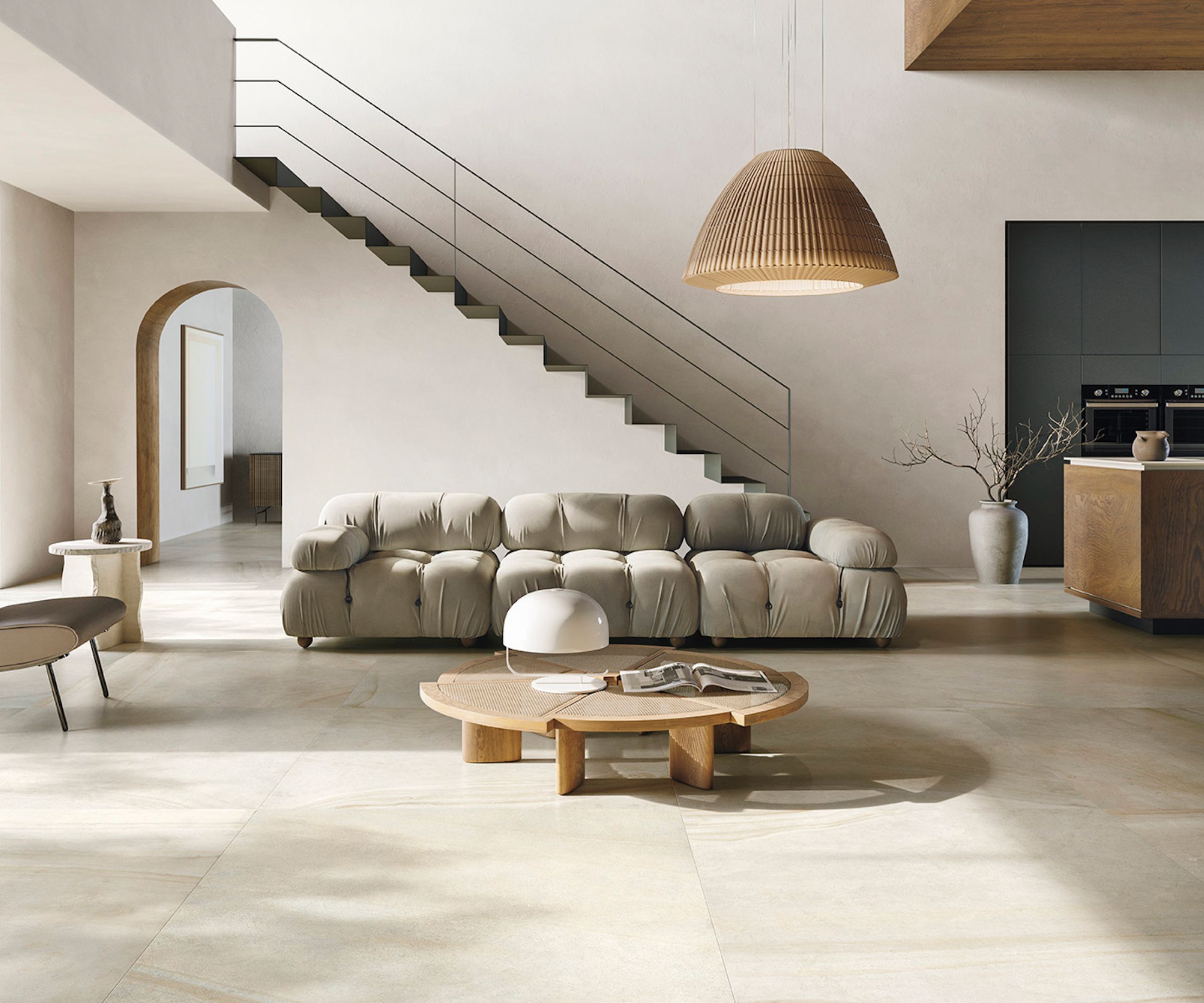6 areas of your home you should never insulate – and why it's a hazard that can do more harm than good
Experts insulation here may do more harm than good


Insulation is crucial for energy efficiency, but there are areas in your home where insulation can do more harm than good. Misplaced insulation can create fire hazards, trap moisture, or block essential airflow.
From chimneys to ceiling lights, experts reveal six areas you should avoid insulating and why.
By knowing the most important areas to insulate and those not to, you'll soon be cozying up in a welcoming home fit for all seasons.
1. Chimneys and furnaces

Furnaces and chimney stacks require proper clearance to prevent overheating or fire. Insulating too close to these heat-producing areas can lead to dangerous situations.
Josh Mitchell, HVAC technician and founder of Air Conditioner Lab, says, 'Furnace flues and chimneys get extremely hot, and adding insulation too close can create trapped heat and even cause fires. Insulation materials like fiberglass and spray foam are not designed for direct contact with high temperatures.
'To insulate safely, use a fire-resistant sealant instead of traditional insulation for areas around flues and chimneys. A fire-rated sealant can fill small gaps around the flue while ensuring safety. Building codes usually require a 1-2 inch gap between insulation and anything that gets hot, called 'clearance to combustibles' – so be sure to maintain the required buffer space to prevent heat buildup.'

Specially formulated to impede the spread of flames and smoke, this reliable sealant comes with its own attached smart dispenser straw. Mitchell says, 'This easy-to-apply foam is specifically designed for sealing gaps around hot areas like furnace flues. It's fire-rated and can help close small air gaps safely without the risks of traditional insulation.'
2. Electrical wires
Insulating around electrical wires can pose a fire risk if done improperly. Overheating can occur if insulation restricts airflow around wires, especially older ones not rated for modern loads.
Design expertise in your inbox – from inspiring decorating ideas and beautiful celebrity homes to practical gardening advice and shopping round-ups.
Francisco Fuenmayor, a home improvement expert at LocalProBook, says, 'Insulating too closely around electrical wiring can create a fire hazard. If insulation compresses around wires, especially those that may overheat, it can prevent them from cooling properly. This risk is higher with older wiring, like knob-and-tube systems.
'Instead, ensure a three-inch clearance around wiring, or opt for wire-safe, flame-resistant insulation sleeves.'
Always consult an electrician or use insulation specifically designed to accommodate electrical wiring. In this guide, electrical experts explain how to fix loose outlets safely.

This wire sleeve protects and extends the life of your wires. Flame-resistant, halogen-free, and highly elastic, these wires are both durable and easy to install. Fuenmayor says, 'This affordable wire sleeve is an easy and safe alternative to insulate around wiring without direct contact, reducing fire risks.'
3. Ceiling lights

Recessed lighting fixtures generate significant heat, making it unsafe to place insulation directly around them unless they are rated 'IC' – Insulation Contact).
Mitchell explains, 'Most recessed lights require space around them to dissipate heat. If insulation is placed over non-IC rated recessed lights, the heat gets trapped, which increases the risk of overheating or even fire.
'Non-IC rated lights aren't designed for direct insulation contact and can't handle the heat that gets trapped when covered, so always leave 3-5 inches of clearance around non-IC-rated recessed lights. The additional warmth can reduce the lifespan of the lighting and create a safety hazard.
'If you're concerned about heat loss in these areas, consider adding a recessed light cover specifically designed to handle insulation contact. These covers protect the light while allowing insulation to be placed nearby.'
Mitchell recommends this Tenmat Recessed Light Cover from Amazon, adding, 'This fire-rated cover allows insulation to be safely placed around recessed lights without overheating.'
Check out what our writer found when she asked experts: Should bedrooms have ceiling lights?
4. Floor crawl spaces
While insulating crawl space floors may seem beneficial, it can lead to mold and structural issues.
Mitchell explains, 'While insulating floor joists in a crawl space may seem effective for keeping floors warmer, in un-ventilated crawl spaces, insulation can trap moisture. Over time, this can lead to mold, mildew, and even wood rot. Damp insulation loses its effectiveness and becomes a breeding ground for mold, affecting air quality throughout the home. The trapped moisture can also weaken the wood structure, which might require costly repairs.
'Instead of adding insulation under the joists, install a vapor barrier on the ground of the crawl space. A thick plastic sheeting can prevent moisture from the earth from seeping upward, helping control dampness and humidity in the space without risking moldy insulation.'
Mitchell recommends Farm Plastic Supply Black Plastic Sheeting, available from Amazon, adding, 'This is an affordable vapor barrier that's durable enough for crawl spaces. Covering the ground with this will prevent moisture from rising and keep the crawl space drier, making insulation less necessary.'
5. Roof edges

Roof edges, particularly where soffits are located, must remain ventilated to ensure proper airflow in the attic. Insulating these areas can block ventilation, leading to trapped moisture, mold growth, and roof damage.
Fuenmayor says, 'If insulation is too close to the roof’s edge, it can prevent proper ice damming, which leads to water pooling and potential leaks. Insulation in these areas can trap warmth in the wrong spots, leading to ice dams on colder days.
'Instead, opt for specialized insulation in attic areas that won’t block airflow near roof edges. Personally, I'd recommend this Easy Heat ADKS-500 Roof/Gutter Kit from Amazon, which help reduce the risk of damming without needing insulation near edges.'
He adds, 'Keeping eaves well-ventilated will help prevent ice dams while maintaining attic warmth.'
Learn more about attic insulation types.
6. Basement foundation walls

Insulating basement foundation walls from the inside when considering basement insulation ideas can create condensation and encourage mold growth, especially in humid climates.
Wayne Scherger, brand president of iFOAM, says, 'Ventilating basement foundation walls might seem like a logical way to manage moisture, but it often creates more problems than it solves. For one, it can lead to significant heat loss – basements are responsible for up to 25% of a home’s total heat loss, and introducing outdoor air makes temperature regulation even harder.
'This is particularly noticeable in winter when the earth – already a poor insulator – can’t effectively stabilize the temperature around the foundation walls. Colder walls mean higher risks of condensation, dampness, and issues like mold, efflorescence, or even spalling [fragments of material breaking].
'Structural concerns are another factor. Ventilation can expose the walls to fluctuating temperatures and humidity, which weakens their integrity over time. In colder climates, cycles of freezing and thawing can cause cracking or frost heave, further compromising the foundation. Additionally, ventilating these spaces may increase air leakage through cracks and other penetrations, which could allow radon to seep in, affecting indoor air quality.'
Instead of ventilating, Scherger advises using closed-cell iFoam Spray Foam to seal, waterproof and insulate the foundation walls. He says, 'It offers excellent thermal and vapor barrier properties, reducing air leakage and minimizing condensation and moisture risks. Ultimately, it creates a strong, energy-efficient envelope around the home.'
Our guide to smart and easy basement insulation ideas contains more tips to boost your home's energy efficiency.
FAQs
Can insulation around water pipes prevent freezing?
Yes, insulation can protect water pipes from freezing in unheated spaces like basements or crawl spaces. Use pipe-specific insulation or foam sleeves and ensure pipes are properly sealed against drafts.
How can I ensure my attic is properly ventilated?
Maintain clear pathways between soffit vents and ridge vents. Use baffles to prevent insulation from blocking airflow, and check for proper air circulation to avoid moisture buildup and heat retention.
Is spray foam insulation safe for all areas?
Spray foam is versatile but not suitable for areas requiring ventilation, like attic eaves or near heat sources. Its airtight properties can trap moisture if applied incorrectly, so use it where airtight seals are necessary and avoid areas prone to condensation.
So there you have it – six areas of your home you should never insulate to help keep your home safe from unnecessary risk of mold, damp, fire or heat loss.
While insulation is essential, knowing where not to insulate is equally important. By avoiding these seven areas, you can prevent structural damage, maintain airflow, and ensure a safer, more energy-efficient home.
Next, check out the five signs it's time to replace your insulation.

With more than a decade of experience writing news, lifestyle, consumer, and human interest articles for a wide range of national and international publications, Andy is a highly-qualified journalist writing features for the national press. From front porch to backyard, attic to basement, Andy has written about every area of the home. He specialises in bringing together the best industry expertise to answer all of your most pressing home and garden questions about seasonal and everyday cleaning, decluttering, organizing and DIY.